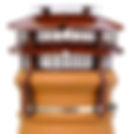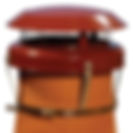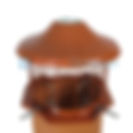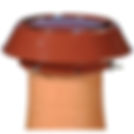
Below is a list of common questions that I get asked. Scroll down the list and hopefully you will find the answer you have been looking for. If not, feel free to contact me with your question and I will endevour to answer it for you.
Q & A's
Q) Why do I need my chimney swept?
A) There are four main reasons to have your chimney swept.
1) Safety. This is one the main reasons to have your chimney swept. Burning any type of fuel produces toxic fumes which you want to escape out of your house through the chimney. Blockages and soot build up can hinder or stop all together the fumes from leaving the chimney quick enough, with the result of smoke and fumes being allowed to enter your living areas. Breathing in the fumes would obviously not be good for your health.
2) Avoiding chimney fires. This is the other main reason for getting the chimney sweep in. When soot is allowed to build up too much, a chimney fire can result. The chance of chimney fire will increase dramatically if you burn unseasoned wood (see the question What fuel can I burn? to see what unseasoned wood is) and as a result have a tarry substance bake itself onto your flue. The thicker the tar the more intense the heat of the fire will be resulting in more possible damage to the chimney. The least damage usually being a broken chimney pot. The worst is that your house could burn down. Thankfully the worst doesn't happen too often but it does happen.
3) If, because of blockages or excessive soot build up, smoke enters into your room the decoration may suffer. Soot falls and smoke do blacken the decor or ruin the carpet.
4) If you have damp patches, particulary on the upstairs chimney breast, that could be an indication of a nest in the chimney.
A nest will hold on to any of the rain water that enters into the chimney and that in turn can transfer through the plaster.
Q) How often do I need to have my chimney swept?
A) This will depend on what you burn and how often you use the fire. As a general rule if you use your chimney in the evenings and weekends, once a year should be enough. If you use the fire a lot more often through the day then having the chimney swept once at the beginning of the season and once half way through may be necessary. Your chimney sweep should be able to advise you on the frequency you would need it swept based on the amount and type of soot that came down during sweeping.
Q) Why does my chimney smoke?
A) There are a few reasons why your chimney is smoking. It could be that one, two or a combination of the following may cause smoke to enter your living area.
1) The chimney has excess soot or a blockage such as a birds nest in it. Solution. Get your chimney swept.
2) The fire hasn't been used for a while and cold air has got into the chimney. Cold air is heavy, so as you light the fire the cold air pushes the smoke into your living area. Solution. Burn rolled up newspaper sheets, as this will create a lot of heat quickly, resulting in the cold air being pushed up out of the top of the chimney. Once you have established a column of warm air you can then proceed with setting and lighting the proper fire.
3) Downdraught. When your fire has been lit for a while and suddenly you get a puff of smoke enter your room, this may be downdraught. Downdraught is caused by wind coming down your chimney, generally because the chimney stack is too low or you have obsticles surrounding the stack. Solution. You could have the chimney stack made taller and in some cases that will be the best option. In most cases though, fitting an anti downdraught cowl is a relatively cheap and mostly effective solution to the problem (see the question, Does my chimney pot need a top on it ?)
4) Fires need a good supply of air to work properly. If your fire is starved of air because of your home being well insulated and the door of the room that the fire is in is shut then smoke can start to come into the room. Solution Keep the door of the room that your fire is in open enough to allow air to enter in. Fitting airvents into an external wall in the room may be an answer if you can't get aroung the problem any other way.
Q) I have had my chimney swept, so why are bits still falling into the fireplace?
A) It is normal to still have a small amount of downfall after having your chimney swept. The chimney sweeping process can be thorough but it is impossible to clean any chimney 100%. If you have an old brick and render chimney (usually pre 1965) then the rendering which is sand based will soften over the years as a result of atmospheric conditions that your chimney is open to and just the aging process. As a result bits of sand will continue to fall over the years until there is none, or very little of it, left. This then leaves just the brickwork with its hundreds of little ledges for small amounts of soot and bits to rest on. Wind and rain will then inevitabley make some drop into the hearth. As long as the chimney has had a thorough sweeping this is nothing to worry about. Even lined chimneys, clay or metal, have areas where small amounts of soot may remain.
Q) What is carbon monoxide?
A) Carbon monoxide (CO) is a highly poisonous substance produced by the incomplete burning of gas and Liquid Petroleum Gas (LPG).This happens when a gas appliance has been incorrectly fitted, badly repaired or poorly maintained. It can also occur if flues, chimneys or vents are blocked.Oil and solid fuels such as coal, wood, petrol and oil can also produce carbon monoxide
Remember the six main symptoms to look out for:
-
headaches
-
dizziness
-
nausea
-
breathlessness
-
collapse
-
loss of consciousness
Being aware of the symptoms could save your life.
Carbon monoxide symptoms are similar to flu, food poisoning, viral infections and simply tiredness. That’s why it’s quite common for people to mistake this very dangerous poisoning for something else.Other signs that could point to carbon monoxide poisoning:
-
Your symptoms only occur when you are at home
-
Your symptoms disappear or get better when you leave home and come back when you return
-
Others in your household are experiencing symptoms (including your pets) and they appear at a similar time
What should I do if I experience any symptoms of carbon monoxide poisoning?
-
Get fresh air immediately. Open doors and windows, turn off gas appliances and leave the house
-
See your doctor immediately or go to hospital - let them know that you suspect carbon monoxide poisoning. They can do a blood or breath test to check
-
If you think there is immediate danger, call the Gas Emergency Helpline
-
Get a Gas Safe registered engineer to inspect your gas appliances and flues to see if there is a dangerous problem
Don’t assume your gas appliances are safe: get a Gas Safe registered gas engineer to do a check. This is the only safe way to prevent yourself and those around you from incurring serious illness or death due to carbon monoxide exposure.
What is carbon monoxide poisoning?
Carbon monoxide poisoning occurs when you breathe in even small amounts of the gas.When you breathe in carbon monoxide, it gets into your blood stream and prevents your red blood cells from carrying oxygen. Without oxygen, your body tissue and cells die.Levels that do not kill can cause serious harm to health when breathed in over a long period of time. Long term effects of carbon monoxide poisoning include Paralysis and brain damage. Such long term effects occur because many people are unaware of unsafe gas appliances and subsequent gas leaks.
How do I avoid a carbon monoxide leak in my home?
Your home may show signs of carbon monoxide. Any one of the following could be a sign that there is carbon monoxide in your home.
-
The flame on your cooker should be crisp and blue. Lazy yellow or orange flames mean you need to get your cooker checked
-
Dark staining around or on appliances
-
Pilot lights that frequently blow out
-
Increased condensation inside windows
If you have a faulty appliance in your home, it could lead to carbon monoxide poisoning. Get your gas appliances checked to avoid carbon monoxide poisoning.
Why should I get a carbon monoxide alarm?
Because carbon monoxide has no taste, smell or colour. Gas Safe Register strongly recommends you fit an audible carbon monoxide alarm in your home.
While an alarm will alert you to carbon monoxide in your home, it is no substitute for having an annual gas safety check and regular servicing by a Gas Safe registered engineer.
A carbon monoxide alarm looks similar to a smoke alarm and is very easy to fit by following the manufacturer’s instructions. You can purchase a carbon monoxide alarm from your local DIY store, supermarket or from your energy supplier.
Before purchasing a carbon monoxide alarm, always make sure it is marked to EN 50291. It should also have the British Standards' Kitemark or another European approval organisation's mark on it. Follow the alarm manufacturer’s instructions on siting, testing and replacing the alarm.
You are particularly at risk from carbon monoxide poisoning while sleeping, as you may not be aware of early carbon monoxide symptoms until it’s too late. Do not use the ‘black spot’ detectors that change colour when carbon monoxide is present. These will not make a sound to wake you up if the poisonous gas is present while you are sleeping.
The above information about carbon monoxide was taken from the gassaferegister.co.uk website.
Q) I have a stove with a liner, does my flue still need sweeping?
A) I have had customers say to me that they were told that stove liners don't need sweeping. They have, however, been misinformed. The instruction manual that came with the stove will make that clear. All chimneys/flues that are used to burn solid fuels need sweeping. You have no doubt spent a lot of money on having your stove and liner fitted. Sweeping the flue is one of the main ways that you will know if everything is in good order and that your flue is not getting a build up of tar on it as a result of bad wood or bad burning habits.
If you have a stove there are three things that I would highly recommend that you own.
1) A carbon monoxide alarm. When the stove was fitted an alarm should have been left in the room that the stove is in. If not then one should be bought as soon as possible. Follow the instructions about the best place to put it.
2) A moisture meter. This is a hand held device for checking the moisture content of the logs that you are planning to burn. Split the log and hold the meter against the inner part of the wood to get an accurate reading. Your stove manual will tell you that the maximum moisture content in the wood should be 20%.
3) A temperature disc. This is a magnetic disc that will either sit on the stove or if it's a pipe specific one, then it will fix at about 16" up the vertical pipe which sits on the stove. This will tell you if you are burning your stove at its optimum temperature and not too low or hot, either of which are not good for your stove or lining.
Don't forget to keep the stove manual handy so that you can make sure that you are following the makers instructions, which are there to help you get the best from the stove and keep it in good working order. If you don't have the manual you should be able to download one from the internet.
Q) Does my stove need servicing?
A) Stoves do not contain many parts. Your chimney sweep should always let you know if there are any of them that do require attention, such as badly cracked or damaged clays that are there to keep the heat away from the external metal. The most common thing that needs replacing apart from the clays is the rope seal that goes around the door. Most, if not all parts for your stove are readily available online and can be easily fitted by yourself, with maybe a little help from youtube. If you don't think that you are up to it then your sweep should be happy to replace parts that you may have ordered. Use your manual to get the particular stove model that you own so that your parts will fit correctly.
Q) What fuel can I burn?
A) Although this is mainly a matter of preference, a couple of things need to be considered.
1) Are you living in a smokeless area?, in which case you will be only allowed to burn smokeless fuel. To find out if you are in such an area you can contact your local authority. Most people will not be affected by this.
2) If you have a stove, depending on whether it is a wood burner or a multi fuel stove, you can only burn wood on the former or wood and smokeless fuel on the latter. If you will be burning more than 20% smokeless fuel you need to make sure that your flue liner is made of the best quality 904 grade steel. This is because smokeless fuel soot is corrosive and you may find that your liner does not last that long. So if the liner you have fitted is only 316 grade you should stick to burning wood.
3) On an open fire, seasoned wood and coal burn well together, giving out a good amount of heat. If you choose to burn wood the most important thing to remember is that the wood needs to be seasoned. This means that a lot of the moisture contained in the wood has been allowed to evaporate. This takes time, so it is recommended that newly chopped wood is cut to log size and allowed to stand outside but under a roof of some kind, to stop the rain getting to it, for about one year. Being outside is important because the air flow around the wood allows the moisture to leave more quickly. Apart from giving out little heat, burning unseasoned wood will gradually deposit a layer of tar on your chimney. This layer will bake on and will not be able to be removed by mechanical means. The longer that you continue to burn damp wood the thicker the tar will get which will increase the chance and severity of a chimney fire. A chimney fire will change the consistency of the tar to that of a brittle honeycomb type substance. So if you do have a chimney fire, have the chimney swept very soon after as more of the deposits will be able to be cleared away before they have time to harden again.
You may wonder how you can tell if the wood is dry enough. Take a look at your logs. Do they have cracks on the ends. Do they feel quite light to pick up. If you can answer yes to both then likely the wood is ok. If you try burning them can you hear hissing for more than a few minutes. If so then they are still too wet. To take the guess work out of it buy yourself a moisture meter. See note 2) on the question I have a stove with a liner, does my flue still need sweeping?
Good, seasoned wood is getting harder to find, because there is such a demand for it. An alternative, already popular in Europe and getting more so in the UK, are Heat logs or Briquettes. These are guaranteed to be less than !0% moisture content and quality ones contain no additives or glues, just highly compressed sawdust. They are cheaper than traditional logs and can burn hotter and longer. These are mainly for stoves. For more information on this type of fuel go to www.woodfuel.coop.
Q) Is it true that animals can nest in my chimney?
A) Yes it is true. In England the main culprits are jackdaws and squirrels.
Q) Can I stop animals nesting in my chimney?
A) Yes you can. See the question Does my chimney pot need a top on it? for some examples of bird guards or cowls.
Q) Does my chimney pot need a top on it, if so which type?
A) If you have been using your fire over a period of time and you have no issues with downdraught and you dont mind if some rain comes down your chimney or the odd bird or squirrel, nests in, or falls down it, then you dont need to have anything put on your pot. If on the otherhand any of the previous four situations would bother you then fitting one of the many commercially available tops can stop the problems. But which top? Below are a few photos of some of the different tops that you can buy with an explanation of what problem they are designed to remedey.
If you only want to stop most of the rain and all of the birds from falling down the chimney then the first three photos show some examples of birguards that can be fitted.
If you have downdraught problems then the second row of three photos are examples of tops that are designed to stop or at least help reduce this from happening.
The last photo shows several types of tops that should not be fitted to any live flue. They are made for ventilating dissused flues only.






